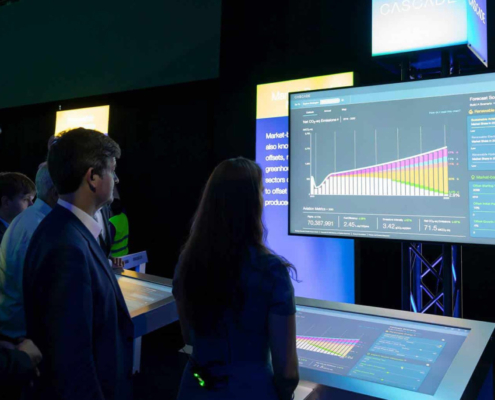Imagine a future where airplanes glide through the skies without leaving a trail of carbon emissions. It might sound like a distant dream, but Boeing is working to make it a reality: achieving net-zero carbon emissions by 2050.
Boeing has already introduced the Cascade Climate Impact Model, a tool designed to assess the effects of sustainability solutions aimed at reducing aviation’s carbon footprint.
What’s Boeing’s Proposal?
During the Boeing and RSB Sustainability Forum held at Amcham in São Paulo, Brazil, the study “Fueling the Sustainable Bioeconomy: Creating Impact through Regional and Multisectoral Programs” was presented. This study explored how the aviation sector can combat climate change, generate jobs, boost economies, and uplift rural communities.
One of the study’s key points was Brazil’s potential to become a global leader in the production of Sustainable Aviation Fuels (SAF). With projections indicating a global demand of around 23 billion liters of SAF by 2030 and up to 450 billion liters by 2050, the urgency of transitioning to sustainable aviation solutions is evident.
How Does Cascade Work?

Image: enelaire.mx
Boeing’s Cascade Climate Impact Model measures the impact fleet evolution, operational efficiency, renewable energy sources, future aircraft technologies, and carbon offset measures, on the journey toward decarbonization.
Sustainable Aviation Fuels must play a more critical role in reducing carbon emissions. Since SAF can be used in both existing and new commercial aircraft, it offers a solution for immediate emission reduction. Considering a significant portion of the aviation fleet is projected to remain operational for the next decades, investing in SAF emerges as a short-term strategy.
Boeing’s initiative and their Cascade Climate Impact Model showcase the aviation industry’s collective determination toward sustainability. As global awareness continues to grow, initiatives like these are vital on the path to a more ecologically conscious future.
By investing in sustainable flight solutions and collaboration, we’re not just talking about reducing aviation’s carbon footprint; we’re shaping a more sustainable future.
Source: Boeing












Leave a Reply
Want to join the discussion?Feel free to contribute!